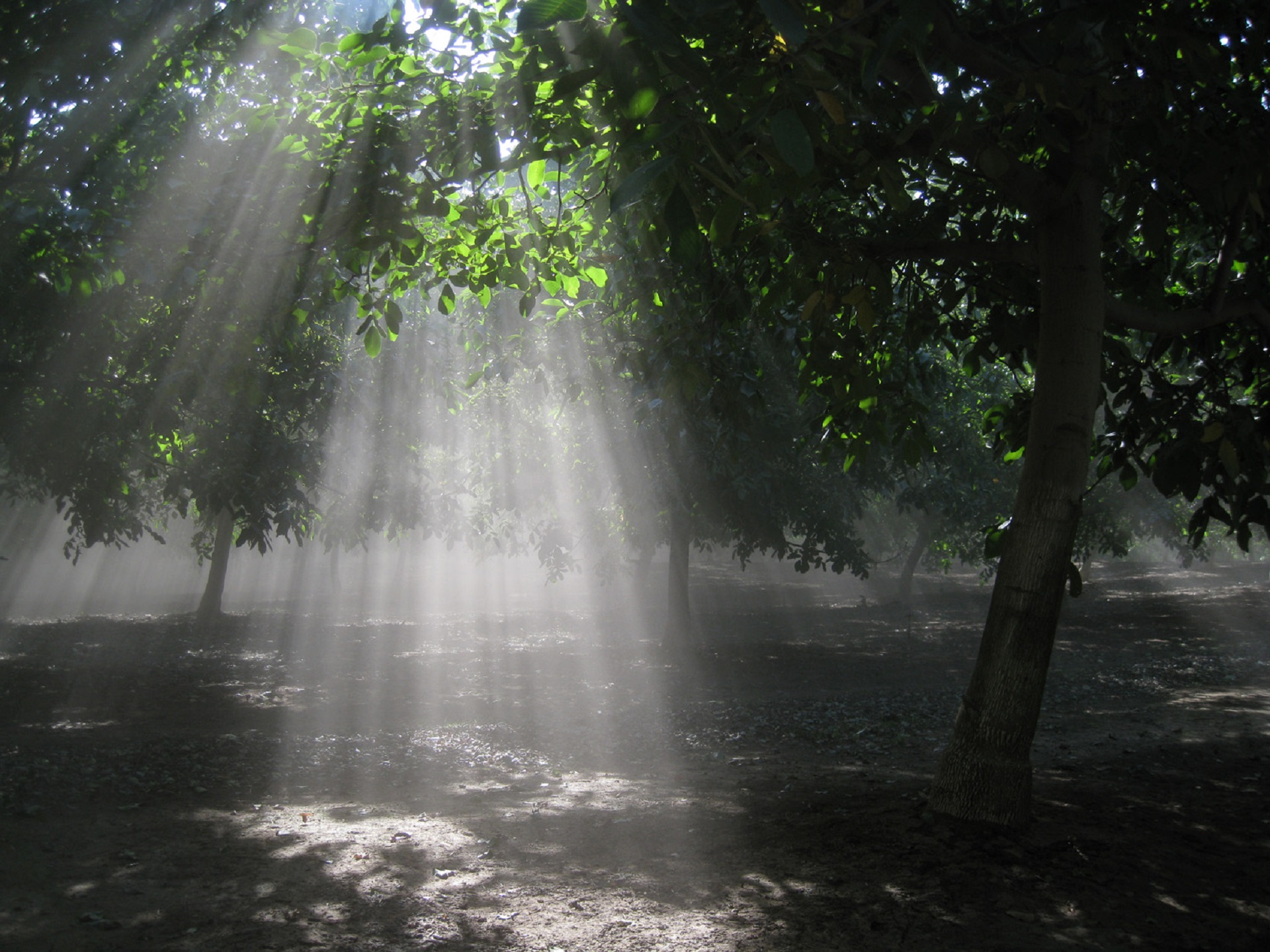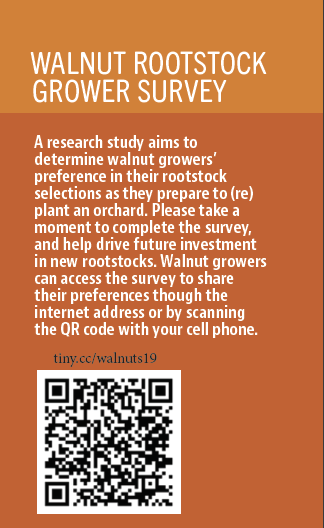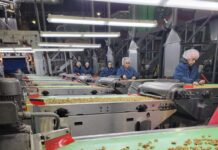
 Walnut production is a long-term commitment of resources in land, labor and management. Because of the lag time from field preparation and planting to first harvest, walnut production is a fiscally demanding endeavor. During production operations, orchard management is a critical factor for improving yield; this includes tree protection from soil-borne maladies. Soil-borne plant diseases include plant-parasitic nematodes (root lesion nematode, Pratylenchus vulnus, root-knot nematodes, Meloidogyne spp.), crown gall (Agrobacterium tumefaciens), and Phytophthora root and crown rots (Phytophthora spp.).
Walnut production is a long-term commitment of resources in land, labor and management. Because of the lag time from field preparation and planting to first harvest, walnut production is a fiscally demanding endeavor. During production operations, orchard management is a critical factor for improving yield; this includes tree protection from soil-borne maladies. Soil-borne plant diseases include plant-parasitic nematodes (root lesion nematode, Pratylenchus vulnus, root-knot nematodes, Meloidogyne spp.), crown gall (Agrobacterium tumefaciens), and Phytophthora root and crown rots (Phytophthora spp.).
Among the biotic stresses there is also the so-called “replant problem”, where the walnut tree has growth depression when it is planted in an outgoing orchard of the same crop. The microbial cause of this malady is poorly understood but different rootstocks may provide advantages in coping with this problem. Other demands on rootstocks may include anchorage, and the tolerance to water stress (surplus during winter flooding or scarcity during summer). Rootstocks will also play a role in the development of black-line disease. In this pollen-transmitted viral disease, severe necrosis (dying walnut tissue) develops at the graft union. The response of the rootstock will impact the development of the disease, and on certain rootstocks the tree remains healthy. These are just some of the considerations growers may include in their decision-making process on which rootstocks to choose for their new orchard.
A team of research scientists from the University of California, USDA-ARS, and California State University at Fresno have come together to further improve rootstocks available for commercial production. In this comprehensive project, supported by federal and California Walnut Board funding, the team has started off with breeding populations of so-called “interspecific hybrids” of different types of walnut. This allows scientists to explore the genetic basis of many of the different accessible walnuts. The draw-back is that these crosses are infertile, and no further cross-breeding is possible after this one cross. Accessing this rich pool of the new hybrid walnuts is only possible because plant scientists have developed the technology to “rescue” the new walnut embryo from the seed where it may not germinate by itself. By removing it from the nut, the scientists can grow it in tissue culture, on artificial media, and regenerate new plants via various steps of propagation. In fact, the clonal rootstocks VX211, RX1 and Vlach routinely go through these tissue culture steps in their production. They are clonally (vegetatively) produced. This vegetative production of new walnut plants results in much more uniform plants than the traditional seedling rootstocks.
In this research program, after plants have grown to the size of liners, they are placed in the disease testing pipelines for the different pathogens. Phytophthora root rots and crown gall susceptibility are tested under greenhouse conditions. Susceptibility to plant-parasitic nematodes is tested under field conditions in a two-year process. Other biotic and abiotic stresses are investigated in a combination of greenhouse, shadehouse and field experimentation. These procedures are involved and lengthy, but data of the different evaluations are combined, and elite plants with resistance preferentially to multiple maladies are selected for further testing. “Front-runners” of these efforts then require several years for vetting under commercial conditions prior to going to the marketplace.
Overall improving walnut rootstocks is a lengthy and tedious process. However, the potential benefits of saving growers money, labor and time are significant due to growers having to worry less about some of the maladies mentioned in this article. This prospect along with decreasing the use of inputs that adversely impact the environment has a two-fold advantage in walnut production by 1) increasing orchard productivity, and 2) improving public perception of agricultural production practices.
Part of the research study discussed in this article is to determine what walnut growers prefer regarding their rootstock selections as they prepare to (re)plant an orchard. Because the development of walnut rootstock is a lengthy process, research activities need to prioritize on what growers believe to be the most important issues. To this end, a grower survey has been developed to ascertain the rootstock characteristics California walnut growers prefer that will improve the productivity of their orchard. We are asking walnut growers to take our 10-minute rootstock survey; the survey results will assist researchers in targeting rootstock characteristics that will be most beneficial to growers. Benefits of taking the survey will yield more refined outcomes that will lead to cost savings and increased productivity that directly benefits the walnut community. Understanding the preferences and concerns of walnut growers is crucial to the success of this project that serves the walnut industry with the best possible, and most useful, results.











